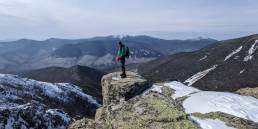There’s no denying the great ice climbing found in the Northeast. The entire region is home to fantastic flows, even in the most unexpected places. However, one ice climbing destination stands out among the rest: Crawford Notch. With numerous test-piece climbs at Frankenstein Cliffs, a multitude of multi-pitch routes on Mount Willard, and the uber-classic Shoestring Gully on Mount Webster, it’s no wonder why this winter wonderland attracts ice aficionados from across the country. However, it’s not just ice climbing experts flocking to Crawford Notch—the area is also home to some of the best moderate ice climbs in the Northeast. Below are a few great destinations for newer ice climbers looking to gain experience on ice in Crawford Notch.
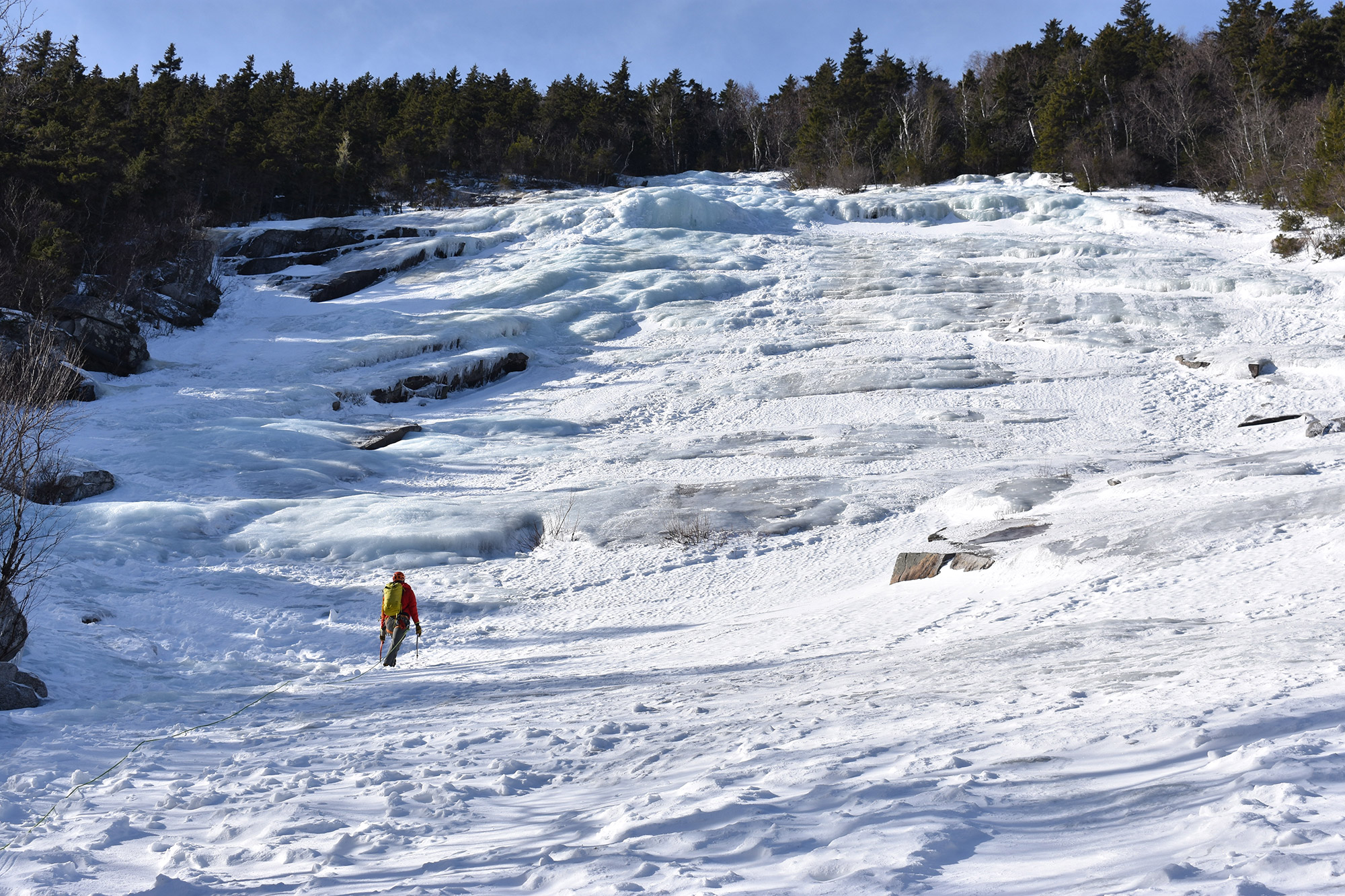
Willey’s Slide
With an easy approach and an abundance of low-angle ice (between four and six pitches of ice graded no harder than WI2), it’s no wonder why so many Northeast ice climbers have kicked their first steps on Willey’s Slide.
Willey’s Slide is the large slab on the side of Mount Willey. It is easily spotted above the aptly named Willey House while driving Route 302 as it winds through Crawford Notch, allowing climbers to get a sense of ice conditions before making the 15-minute approach. Parking for the slide is in the plowed pull-off just after the Willey House if coming from Conway (or before it, if heading south from the Highland Center). Leaving the parking lot, climbers will typically find a well-traveled path leading up the hill and eventually crossing the railroad tracks before depositing them at the base of the climb. Don’t over-layer in the parking lot or you’ll be roasting by the time you reach the slide.

Willey’s Slide is great for newer ice climbers as it offers numerous opportunities to increase or decrease the difficulty of the climbing. Climbers looking to challenge themselves will find the steepest climbing in the center of the slab, while the slab’s sides offer lower-angle, less-challenging climbing. Even better, climbers tackling the climber’s left side of the route can bail into the woods and onto the descent trail at almost any point if the climbing becomes uncomfortable. Speaking of the descent, there’s no need to rappel or make tricky v-threads to descend the climb; at the top, climbers can simply follow a normally well-packed trail through the woods to the base.
Two warnings about climbing at Willey’s Slide: First, it can get busy, as it is a popular destination for many of the area’s climbing schools, our EMS Climbing School included. Second, the slide has avalanched, so use caution after any heavy snow.
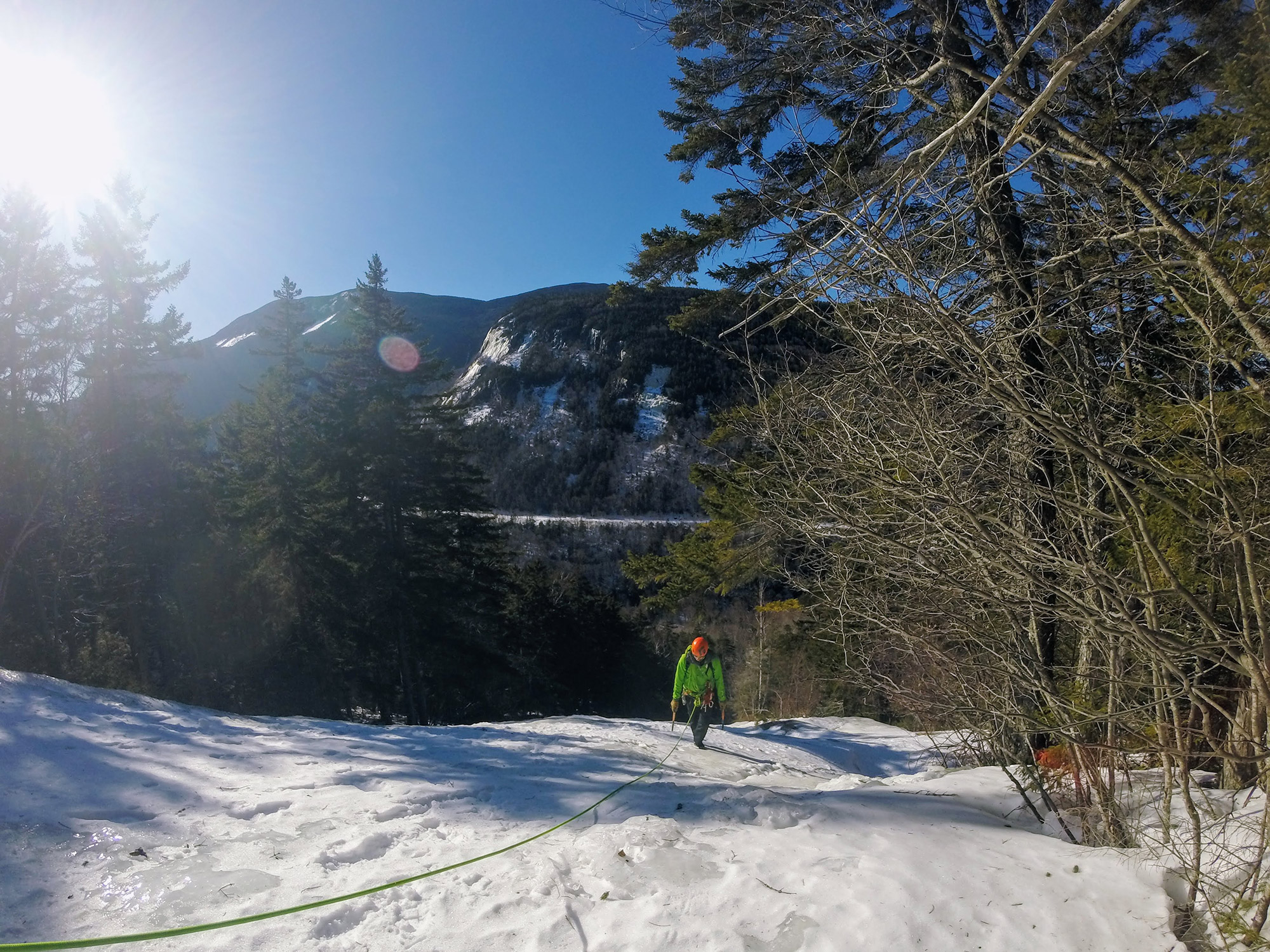
Silver Cascade
A short drive north on Route 302 is Silver Cascade, a gold-star route for those with aspirations of climbing the Northeast’s classic gullies. And, unlike Willey’s Slide, encountering hordes of fellow ice climbers here is a rarity.
Much like Willey’s Slide, Silver Cascade is easily viewable from the road making conditions easy to ascertain. In fact, the route begins at the intersection of the cascade and Route 302. Parking for the route is located at the top of the notch in a small lot just before the AMC’s Highland Center (if coming from North Conway). There’s also a lot directly across from Silver Cascade for summer tourists, but it is not always plowed and folks regularly get stuck.
Once on the route, ice climbers are treated to a wide variety of ice and conditions as they ascend the climb’s four to five pitches. Silver Cascade offers an ample amount of low-angle terrain with the most challenging sections rated no harder than an intermediate-ice-climber-friendly WI2+. After the initial steep, almost all the most challenging sections of Silver Cascade can be avoided, if less-experienced climbers don’t feel up to the challenge. Also, if anchors prove challenging, the climbing is taking longer than expected, or climbers feel like they are in over their head, bailing off the route is as easy as moving into the woods on climber’s right. After four to five pitches, the ice peters out and most climbers descend via a well-trod trail through the woods on the climber’s right side of the climb—once again negating the need to rappel.
One trick to having the best experience on Silver Cascade is to climb it before the snow begins stacking up or in low snow years—climbing Silver Cascade when there is lots of snow is still possible, it’s just more steep snow climbing and a little less fun.
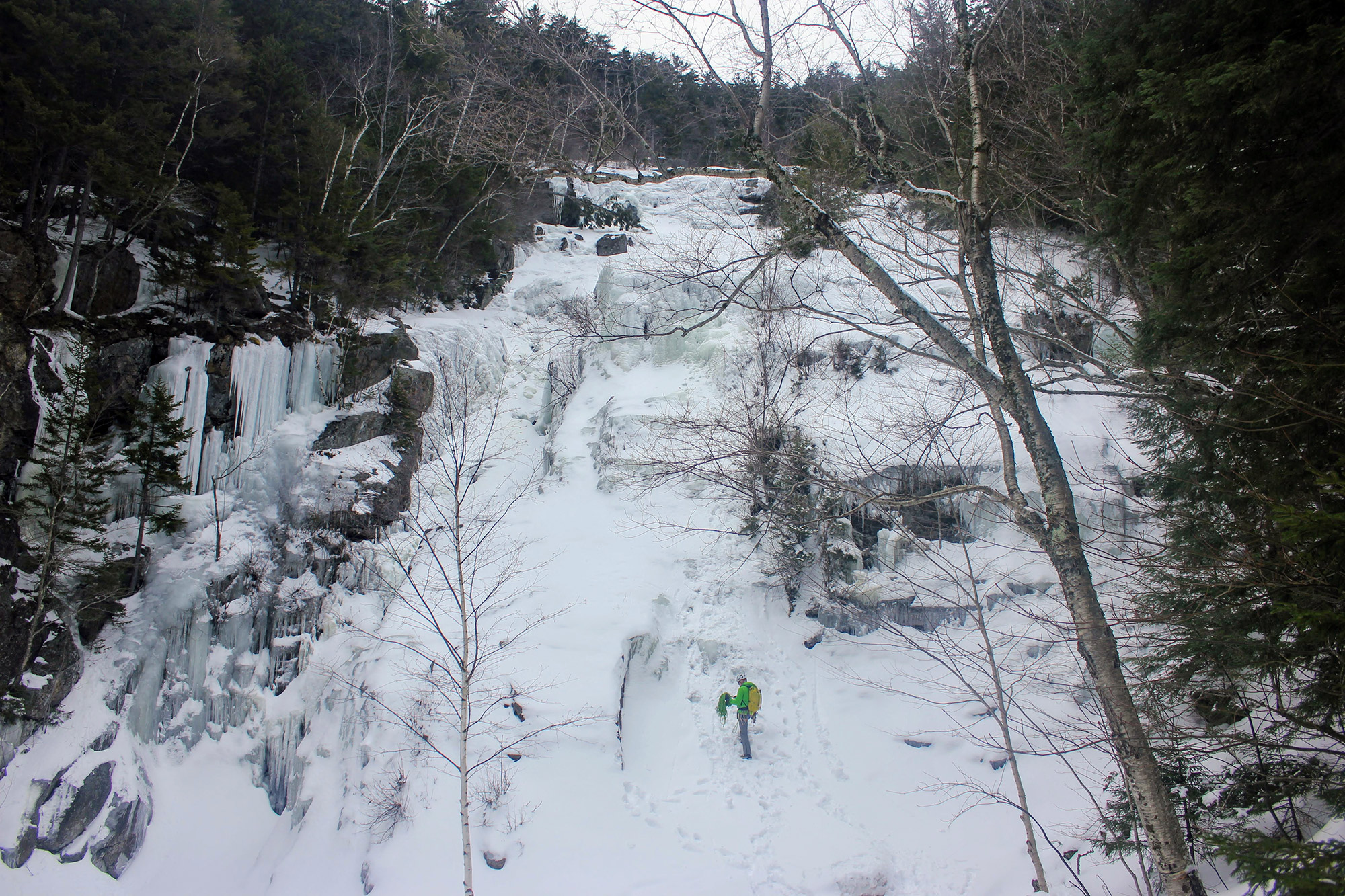
Flume Cascade
Sharing the same parking lot as Silver Cascade is another moderately-graded frozen flow that is sure to please: Flume Cascade.
Similar in character to its neighbor, Flume Cascade delivers a wide variety of climbing, with steep curtains of ice, graded up to WI2+/WI3, interspersed with long sections of snow. Continuing for four to five pitches, the varied terrain on Flume Cascade (very easy initially, followed by several bulgy sections) makes for an engaging outing and is great training for tackling longer, more challenging adventures in Crawford Notch. Like the aforementioned climbs, the most challenging sections of Flume Cascade can be avoided by taking less-steep variations, and the woods on climber’s right (also the descent trail) provide a reliable bail-out option for almost the entire climb—although, you’ll want to try to make it to the top, as Flume Cascade concludes in a very cool cave-like feature.

Although Silver and Flume Cascade are rarely super busy, the variety of climbing options allow ample opportunity for more experienced climbers to pass novice parties—a luxury not found on all of Crawford Notch’s classic ice climbs. Additionally, the proximity of Flume Cascade to Silver Cascade along with the easy walk-offs for both climbs mean that many climbers can tick both routes—and between eight and ten pitches of climbing—in a day.
One word of caution for both Silver and Flume Cascades: these are active streams that are often running during even the coldest spells. Their volume tends to increase significantly (and quickly) if it rains, so be sure to head for the woods if liquid starts falling from the sky.
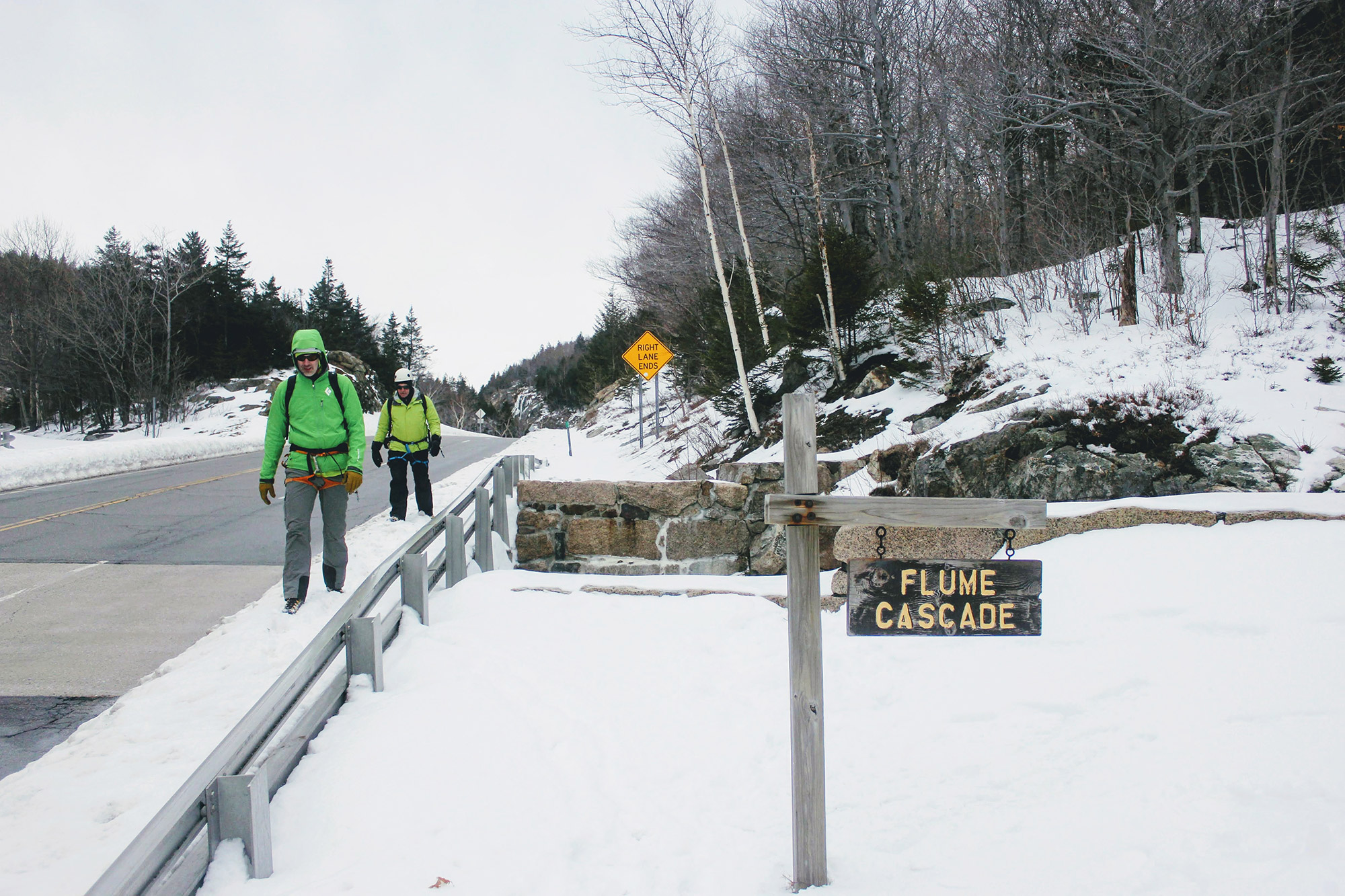
Do you have a favorite ice climb in Crawford Notch? Whether it’s a super-steep single-pitch line or a more moderate multi-pitch route, we want to hear about it—so tell us about it in the comments below.
Tim Peck and Doug Martland
Tim and Doug met long ago at the Eastern Mountain Sports in Canton, Massachusetts. Bonding over a love of slick Quincy Quarry granite, White Mountain sufferfests, and scheming up adventures while folding tee-shirts, today Tim and Doug collaborate to write about their favorite outdoor activities and occasionally get nostalgic about tee-shirt tables.
Related Posts
April 12, 2024
Explore Like a Local: The Outdoor Mecca of North Conway, NH
There's a lot to love about this New…
April 3, 2024
5 Things To Do in the Boston Area During Mud Season
Adventure opportunities are abundant…




